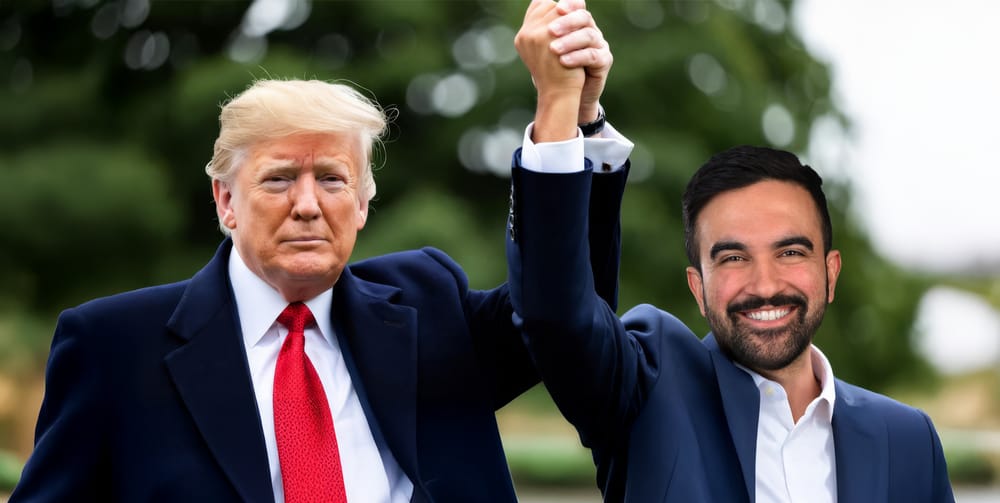After two years of mounting tensions, US president, Donald Trump, has signed the Phase 1 of a comprehensive trade agreement with China, scoring not only a vital political win for himself but a considerable victory for American interests in the long term.
A tiny step with big consequences
If you take a closer look at the deal you will conclude - like others already have - that both countries found some common ground in areas where it was the easiest. But by no means is it an end to the "trade war". More a diplomatic sign of good intentions.
American tariffs on about $370 billion worth of Chinese exports (about 2/3s of the total) into the US will remain in place. Conversely, half of American exports to China will fall under Beijing's retaliatory tariffs.
That said, China has agreed to buy an additional $200 billion worth of American goods over the next two years. This is no small amount but we'll have to see how it works in reality. Beijing has also agreed to battle intellectual property infringement - including forced technology transfers and manufacturing of counterfeit goods. Again, whether it makes any difference depends on Chinese dedication to enforcement of its promises.
In exchange Americans have agreed to lower tariffs on some Chinese exports and freeze another round that would impose higher duties on further $160 billion as well as provide easier access to financial services for Chinese companies.
Despite these developments the two countries remain locked in a struggle that shows no signs of ceasing anytime soon.
On the whole, however, this round of the rivalry ended with a complete American victory, which may appear small at first but its consequences will shape the future.
The sheer fact that China sat down to talk and now signed this first agreement is a success both for the US and Trump himself.
Firstly, it shows that change is possible and progress that addresses American concerns over trade with China can be made. Secondly, Trump can take all the credit for it, in an important year, ahead of presidential elections in November.
For China this deal is mainly damage control.
In this article in May I wrote the following: "Chinese leaders have cornered themselves. Yielding to Washington now would be a sign of weakness and could undermine their position at the helm of the party. Waiting for too long is likely to end with even more punitive tariffs [...] should they refuse to budge until Americans vote in presidential elections next year"
China waited quite patiently until the end of 2019 to see what the consequences of Trump's policies may be for the US - and whether he can face any reasonable competition in the upcoming elections. In the absence of worthwhile contenders - even as Trump is enduring yet another round of Washington drama, currently targeted in an impeachment process - Beijing has likely decided to give Trump a win now (even if it aids his re-election bid) rather than bet against him and then face him coming back with vengeance should he succeed in November.
Signing this agreement isn't all that bad for China either - it can at least show that the country is not completely deaf to complaints and can be dealt with diplomatically.
It is often said, however, that the Chinese have a long term view - and in that perspective this deal has to be viewed as Beijing trying to minimize long term damage.
The problem for China is this - its leaders don't want to appear weak by bending to foreign pressures, as it brings back the demons of the century of humiliation and the unequal treaties. On the other hand, however, any economic slowdown today translates into huge losses over many years as the compounded loss in GDP growth means trillions of dollars worth of lost economic activity.
In a very rough example, assuming an average 5% annual GDP growth over 20 years, a drop of that average to 4% results in a cumulative gap of $51 trillion dollars and annual GDP lower by about $6 trillion after those two decades.
This issue is made even more acute given unfavorable demographic trends - rapidly ageing society and shrinking labor force - which mean that China is under pressure to maximize its growth potential in every single year, because it will struggle to catch up when its society is older and smaller.
Chinese population is expected to peak at 1.44 billion by 2029 and then drop to 1.36 billion in 2050, 1.17 billion in 2065 and remain little over 1 billion in 2100. By then neighboring India may outnumber China by 400-500 million people.
By 2050 China is projected to be home to 350+ million 65+ year olds, including over 100 million above the age of 80 (as per UN calculations).
If it does not grow as fast as it can now it may not get the chance to do that later.
That said, because the signed deal carries no meaningful tariff relief and China has already been showing signs of economic slowing due to the trade war, Americans are winning not only the short term rivalry but the long term one as well.
The Great Diversification
Tariffs, however, come and go but the often overlooked impact of the trade war is the risk for international businesses. Until the tensions erupted, China was the manufacturing hub of the world. You still can get anything done there and, over the years, it has become well integrated into supply chains of companies around the globe.
Even though some industries have started relocating to cheaper locations (that's why a lot of fashion items come these days from countries like Bangladesh) still, in general, whatever you wanted, China can make it and ship it quite quickly wherever you are.
The trade war has shaken that order.
The longer the tensions endure - and there's no sign of them easing anytime soon - the less predictable doing business in or with China is. And even if some miraculous, grand rapprochement between the two rivals happens, companies will always have consider the danger of the conflict flaring up unexpectedly again.
So instead of keeping their eggs in one basket they are already diversifying their sourcing more than before, moving operations to other countries to hedge against those risks.
It may be more convenient to do things in China today but if you have to factor in the threat of huge tariffs being slapped on your products overnight then it makes sense to invest in operations where the US is less likely to enter a direct trade conflict. Vietnam, Thailand, Philippines, Indonesia, Bangladesh or India (among many others) will benefit from this great diversification - which may irreversibly change the face of global manufacturing.
This is another American victory - and one that China will find hard to counteract in the long run, as uncertainty will persist regardless of any future progress between the two countries. It's also good news for smaller nations, until now largely ignored by investors who focused on opportunities in the Middle Kingdom - more business will now trickle towards them. The only loser is Beijing - but that's unlikely to sadden anybody who isn't a Chinese national.
Can China fight back?
It may seem so but the odds are really rather stacked against it - both politically and economically. The country is getting stronger but cannot afford to isolate itself again for the reasons I mentioned above.
It also – and it is its own fault – doesn't have any real allies.
Unlike the US, it is not open to foreign business - so despite being a huge market it's not such a generous importer to contend with the USA (turns out international trade is not much different than basic retail – the customer is always right). Nobody would also call it trustworthy – be it for machinations of its Communist Party, opaque legal system or cut-throat international competition it often engages in - frequently providing state support even to private companies.
Few will pick Beijing over Washington - and even those will do it out of necessity rather genuine preference.
China does try to have a hand in the future manufacturing markets - hence its investments in Africa or ambitious infrastructural projects cutting through Eurasia or circling the Indian Ocean. But they will be all for naught as long as the US remains the wealthiest consumer market that can freely open up or restrict trade with selected partners.
Beijing's best option remains the one that it is most afraid to make – swallow its pride, civilize its rule of law, open up its markets and treat the rest of the world more fairly. Even if it comes at a brief and unpredictable economic expense, the goodwill established in the process would yield benefits for decades to come.
But it seems unlikely Chinese leadership is ready not only to reform its country but, primarily, itself, to achieve that.









